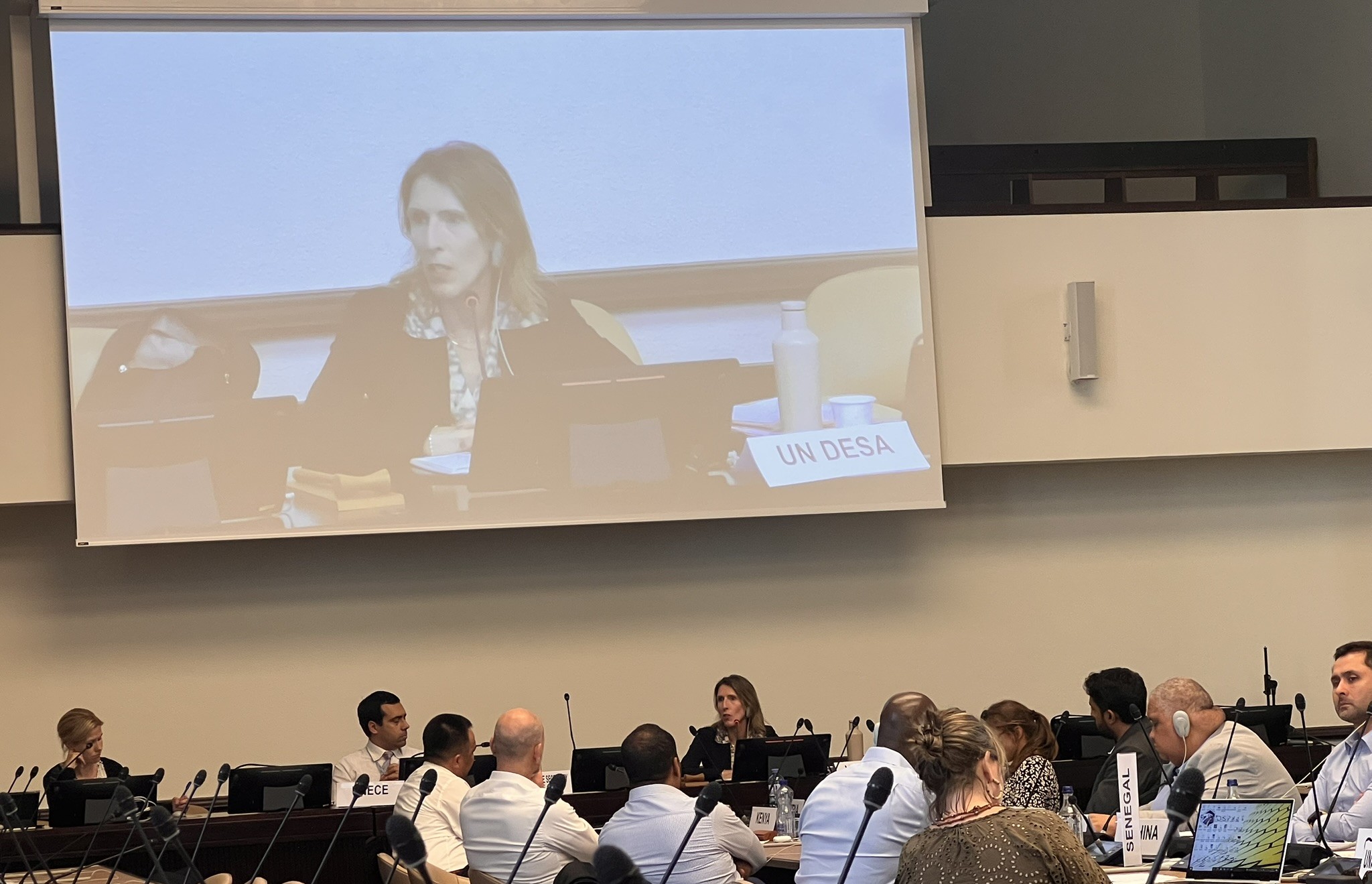
The United Nations Decade of Sustainable Transport 2026–2035 (the Decade) provides a strategic opportunity to tackle rising emissions, urban congestion, unequal mobility, and could, critically, contribute to reducing road traffic injuries and fatalities by ensuring that sustainability goes hand in hand with safety. The Decade is also relevant to NGO advocacy as it gives us another platform to push for at least 50% reduction in road deaths and injuries in line with the Global Plan for the Decade of Action for Road Safety 2021–2030.
We interviewed Astra Bonini, Chief, Integrated Policy Analysis Branch, Division for Sustainable Development Goals, United Nations Department of Economic and Social Affairs, about how the UN Decade of Sustainable Transport can mobilize efforts to advance climate, health and equity goals while ensuring the safety of road users. Read her responses below.
The Decade of Sustainable Transport and the global challenges it addresses
The United Nations Decade of Sustainable Transport (2026–2035) is a global initiative mandated by the UN General Assembly in a 2023 resolution titled “Strengthening the links between all modes of transport to achieve the Sustainable Development Goals”. While transport is not represented by a standalone Sustainable Development Goal (SDG), it is a critical enabler across many SDGs, including those related to road safety, climate action, health, economic growth, and sustainable cities. The Decade seeks to address pressing global challenges such as rising greenhouse gas emissions, urban congestion, road traffic fatalities, and unequal access to mobility. It aims to provide a strategic framework for coordinated action, awareness raising, and resource mobilization. By fostering collaboration among governments, the UN system, civil society, and the private sector, the Decade will help align transport policies with broader sustainability goals.
The importance of the Decade to people on the ground
The Decade of Sustainable Transport can transform everyday life. Imagine safer streets for children walking to school, cleaner air in cities, and reliable transport for rural communities to access healthcare and jobs. By promoting investments in low-emission and public transport, walking, and cycling, the Decade can reduce traffic injuries, cut emissions, and improve quality of life—especially for those groups and communities that may lack access to safe and reliable transport options. It also emphasizes capacity building and partnerships, meaning local voices and solutions can shape global action. For NGOs and communities, this is a chance to influence how transport is planned and delivered—making it safer, fairer, and more sustainable for everyone.
The importance of road safety in the context of sustainable transport
Road safety is fundamental to sustainable transport. Every year, over 1.2 million lives are lost in road crashes—most in low- and middle-income countries. These are not just statistics; they are families, futures, and communities torn apart. A truly sustainable transport system must protect its users, especially the most vulnerable—children, pedestrians, cyclists, and public transport users. The Decade of Sustainable Transport recognizes this and will align with the Global Plan for the Decade of Action for Road Safety (2021–2030). It offers a platform to integrate safety into all aspects of transport planning—from infrastructure and policy to education and enforcement—ensuring that no one is left behind on the road to sustainability.
How road safety measures support wider sustainability and climate goals
Road safety and sustainability go hand in hand. Measures like safer walking and cycling paths, lower speed limits, and traffic calming not only save lives—they also encourage people to shift away from cars. This reduces emissions, improves air quality, and makes cities more livable. When streets are designed for people, not just vehicles, we create healthier, more inclusive communities. These changes also support climate goals by cutting fossil fuel use and promoting active transport. In short, safer roads are greener roads—and they’re essential for a just transition to sustainable mobility.
The role of NGOs in keeping safety central to the Decade’s agenda
NGOs are the heartbeat of the road safety movement. They bring community voices, lived experience, and innovative solutions to the table. During the Decade, NGOs can play a critical role in advocacy, awareness-raising, and holding decision-makers accountable. They can also help shape policies, support victims, and ensure that safety is not sidelined in the rush for infrastructure development. The Decade’s offers a real opportunity for NGOs to influence global and national agendas—making sure that safety is not just a checkbox, but a core principle of sustainable transport.
The role of governments in ensuring road safety is central to transport investments during the Decade
Governments can lead by embedding road safety into every stage of transport planning and investment. This means allocating dedicated funding for safety, integrating safety audits into infrastructure projects, and enforcing strong regulations. Collaboration is key: by working with NGOs, communities, and experts, governments can ensure that investments reflect real needs and save real lives. The Decade provides a framework to do this—linking safety with sustainability and turning commitments into action.